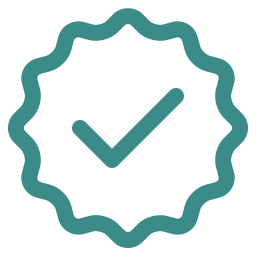Alleviating Aches and Pains: Exploring the Healing Potential of Pilates for Common Discomforts and Enhancing Well-being
We all experience aches and pains from time to time.
Whether it's due to sitting at a desk for prolonged periods, strenuous workouts, or just the general wear and tear of daily life, these discomforts can be incredibly frustrating.
While there are plenty of remedies out there, one that stands out is Pilates.
Pilates is a low-impact exercise that focuses on core strength, flexibility, and balance.
It has been shown to alleviate common aches and pains by increasing mobility, reducing stress and tension in the body, improving posture, and targeting specific areas of pain with targeted exercises.
In this article, we will explore how Pilates can provide long-term pain relief by understanding its benefits for pain reduction and exploring its core principles.
Understanding the Benefits of Exercise for Pain Relief
If you're like me, dealing with aches and pains can be a real drag, but luckily Pilates is here to help alleviate them by using exercise for pain relief.
Pilates has been found to be particularly effective in relieving back pain and sciatica.
This is because the exercises involved in Pilates focus on strengthening the core muscles that support the spine, which can reduce pressure on the lower back and improve posture; you can either do these exercises on a Pilates chair or Basi Systems.
Pilates for back pain involves a series of exercises that aim to strengthen the muscles around the spine.
These exercises include pelvic tilts, spinal twists, and leg lifts. In addition to reducing pain, they can also improve flexibility and increase range of motion.
Many people find that incorporating Pilates into their regular exercise routine helps prevent future episodes of back pain.
One popular tool used in Pilates for back pain is the Pilates Reformers.
This machine allows you to perform more challenging exercises while providing support for your body.
The reformer like the IMX Pilates Reformer works by using resistance from springs and pulleys to build strength in your core muscles.
Using a reformer as part of your Pilates practice can be especially beneficial if you have chronic or severe back pain as it provides additional support and control during movement.
Understanding how exercise can alleviate common aches and pains is just one aspect of exploring the core principles of Pilates.
By focusing on building strength from within through controlled movements, proper alignment, breathing techniques, and mindfulness practices, we're able to achieve better health outcomes overall.
Exploring the Core Principles of Pilates
The core principles of Pilates emphasize the importance of proper alignment, making it an ideal exercise routine for those who suffer from back pain.
The focus on spinal posture in Pilates can help alleviate common aches and pains associated with poor posture, particularly in the lower back.
In fact, studies have shown that individuals who maintain good spinal alignment have a lower risk of developing back pain.
Pilates exercises on an Elina Pilates Elite Wood Reformer for lower back pain has become increasingly popular due to their low-impact nature and targeted approach to strengthening the muscles that support the spine.
By engaging these muscles through specific exercises, such as pelvic tilts and leg circles, individuals can improve their overall spinal health and reduce discomfort caused by sciatica or other conditions.
Incorporating Pilates into your exercise routine not only helps relieve current pain but also prevents future injury by strengthening your core muscles.
By improving your overall posture through consistent practice, you can develop better habits that will carry over into everyday life.
This will be further explored in the subsequent section about strengthening your core for improved posture.
Strengthening Your Core for Improved Posture
Get ready to improve your posture and strengthen your core with these simple exercises.
As we discussed earlier, one of the core principles of Pilates is 'centering,' which means that all movements originate from the center of the body or the 'core.'
By strengthening this area through Pilates exercises on an Align Pilates F3 Reformer, you can improve your posture and alleviate common aches and pains like lower back pain.
Pilates for back pain has become increasingly popular as more people seek natural ways to address their discomfort.
By focusing on strengthening the core muscles that support the spine, Pilates can help reduce strain on the lower back and promote better alignment.
Some effective exercises for targeting this area include pelvic tilts, single-leg stretches, and spine stretch forward.
Incorporating these types of Pilates for lower back pain into your routine can also have a positive impact on other areas of your life.
Improved posture not only helps reduce physical discomfort but can also boost confidence and self-esteem.
Plus, by building stronger core muscles overall, you may find it easier to perform daily activities like lifting heavy objects or participating in sports without experiencing injury or strain.
With these benefits in mind, let's move on to our next topic: reducing stress and tension with Pilates.
Reducing Stress and Tension with Pilates
Feeling stressed and tense?
Take a break and try out these relaxing Pilates exercises that'll help you unwind and feel rejuvenated.
Pilates isn't only great for strengthening your core but also for reducing stress and tension throughout the body.
When it comes to alleviating common aches and pains, Pilates has proven to be an effective method for many individuals.
Here are three ways Pilates can help reduce stress and tension:
-
Deep Breathing
One of the fundamental principles of Pilates is deep breathing.
This technique helps calm the nervous system, which in turn reduces stress levels.
By focusing on your breath during each exercise, you allow yourself to relax both physically and mentally.
-
Mind-Body Connection
Another principle of Pilates is creating a mind-body connection.
By focusing on the movements of your body and being present at the moment, you can release any built-up tension or stress in your muscles.
-
Stretching
Many Pilates exercises involve stretching different muscle groups throughout the body.
These stretches can help relieve tightness and improve flexibility, leading to reduced pain levels.
Pilates has been shown to be especially beneficial for those dealing with back pain.
In fact, many physical therapists recommend Pilates as part of a treatment plan for lower back pain.
Incorporating specific exercises using Elina Pilates Wood Reformer With Tower that targets the muscles supporting the spine can help alleviate discomfort caused by poor posture or weak muscles.
As we continue exploring how Pilates can alleviate common aches and pains, let's dive into how it can increase flexibility and mobility throughout the body.
Increasing Flexibility and Mobility
By incorporating these fluid movements into your routine, you'll notice a significant improvement in your range of motion and overall flexibility.
Pilates is an excellent way to increase mobility without putting stress on joints or muscles. It targets the core muscles, which are vital for maintaining balance and stability while moving.
This helps prevent injuries and promotes better posture.
Pilates is also known for its ability to alleviate common back pain issues such as lower back pain and herniated discs.
These conditions can be debilitating and affect daily activities such as bending, lifting, or sitting for extended periods.
Pilates exercises focus on strengthening the muscles surrounding the spine to provide support, reduce tension, and improve flexibility.
By doing so, it reduces pressure on the discs that cushion our vertebrae.
Furthermore, practicing Pilates regularly can help target specific areas of pain by focusing on strengthening weak muscles that may contribute to discomfort.
For example, if you suffer from sciatica caused by tight hip flexors or hamstrings, certain Pilates exercises can help stretch these muscles effectively while reducing nerve compression in this area.
In conclusion, increasing flexibility through Pilates can lead to overall improved health and reduced joint pain symptoms.
Targeting specific areas of discomfort with tailored exercises will further enhance the benefits of this practice.
Targeting Specific Areas of Pain with Pilates Exercises
To effectively target specific areas of discomfort, you'll want to focus on engaging and strengthening the muscles surrounding those problem areas through tailored Pilates exercises.
One area where these exercises can be particularly effective is in relieving sciatica pain.
Pilates can help alleviate symptoms by targeting the core muscles that support the spine and pelvis, which in turn takes the pressure off of the sciatic nerve.
Another common area of discomfort that can be addressed with Pilates is lower back pain.
Pilates exercises focus on improving posture and alignment, which can help relieve pressure on the lower back.
The practice also emphasizes controlled movements that engage deep core muscles, helping to build strength in this area and prevent future injuries.
So, is Pilates good for back pain?
The answer is a resounding yes!
By targeting specific muscle groups through tailored exercises, Pilates can help alleviate pain throughout the back and improve overall flexibility and mobility.
Maximizing the benefits of Pilates for long-term pain relief involves incorporating it into your regular fitness routine and making it a habit.
Consistency is key when it comes to building strength and flexibility over time.
In addition to targeted workouts, try incorporating small changes into your daily routine like practicing good posture or taking frequent breaks from sitting at a desk.
These small adjustments combined with regular Pilates practice can lead to significant improvements in managing chronic pain.
Maximizing the Benefits of Pilates for Long-Term Pain Relief
Incorporating Pilates into your regular fitness routine and making it a habit can lead to significant improvements in managing chronic pain.
Pilates focuses on strengthening the core muscles, which helps alleviate pressure on other areas of the body.
This can be especially helpful for conditions like sciatica, back pain, and knee pain.
Pilates for sciatica can help by strengthening the muscles that support the lower back, hips, and legs.
This can reduce pressure on the sciatic nerve and alleviate symptoms like shooting pains or numbness.
The exercises also promote better posture which further reduces strain on the lower back.
Is Pilates good for back pain? Yes!
Pilates is an effective way to manage chronic back pain as it strengthens both the deep stabilizing muscles and larger movement muscles in the spine.
Regular practice of these exercises will improve flexibility, stability, and strength in your back muscles leading to long-lasting relief from discomfort.
Similarly, practicing Pilates for knee pain can help strengthen leg muscles that support knee joints reducing stiffness & improving overall flexibility.
Incorporating these exercises into your daily routine may lead to significant improvements in managing chronic pain over time.
Frequently Asked Questions
What are some common mistakes people make when starting Pilates, and how can these be avoided?
When starting Pilates, some common mistakes people make include not properly engaging their core muscles, using improper form, and overexerting themselves.
These mistakes can lead to muscle strain and injury.
To avoid these pitfalls, it's important to start with simple exercises and focus on proper form before advancing to more difficult movements.
It's also helpful to work with a certified Pilates instructor who can provide guidance and corrections.
Regular practice of Pilates can help improve posture, flexibility, and strength while reducing the risk of injury.
Can Pilates be beneficial for people with chronic pain conditions, such as arthritis or fibromyalgia?
They say that movement is medicine, and when it comes to chronic pain conditions such as arthritis or fibromyalgia, Pilates can be a powerful form of treatment.
While it's important to consult with a healthcare professional before starting any exercise program, the controlled movements and focus on proper alignment in Pilates can help alleviate common symptoms associated with chronic pain.
In fact, research has shown that regular Pilates practice can improve flexibility, reduce pain levels, and increase the overall quality of life for individuals with these conditions.
By engaging in low-impact exercises that strengthen muscles and improve body awareness, individuals can experience relief from chronic pain while also improving their physical and mental well-being.
How often should someone practice Pilates in order to see significant pain relief benefits?
In order to see significant pain relief benefits from Pilates, we recommend practicing regularly.
The frequency of practice will depend on the individual's specific needs and goals, but generally, we suggest at least 2-3 sessions per week.
Consistency is key when it comes to reaping the benefits of Pilates for pain relief, as it helps build strength and flexibility in targeted areas of the body.
It's important to work with a qualified instructor who can tailor exercises to your specific needs and limitations, ensuring that you are working safely and effectively towards your goals.
With consistent practice and guidance from a qualified instructor, Pilates has been shown to alleviate common aches and pains by improving posture, reducing muscle tension, increasing mobility, and promoting relaxation.
Are there any specific types of injuries or conditions that Pilates may not be suitable for?
When considering whether Pilates is suitable for a specific injury or condition, it's important to consult with a healthcare professional first.
Certain injuries or conditions may require modifications or precautions during Pilates exercises in order to prevent further harm.
For example, individuals with spinal cord injuries may need to avoid certain movements that could exacerbate their condition.
Additionally, those with severe osteoporosis should avoid flexion and twisting of the spine.
Overall, while Pilates can be beneficial for many individuals seeking pain relief, it's important to approach it safely and with caution in accordance with individual needs and limitations.
How does Pilates compare to other forms of exercise in terms of pain relief and overall health benefits?
Pilates is a highly effective form of exercise that offers numerous health benefits.
It has been shown to alleviate pain in many individuals, particularly those with musculoskeletal conditions such as back pain, arthritis, and fibromyalgia.
Compared to other forms of exercise, Pilates focuses on building strength from the core outwards, which can lead to improved posture and reduced strain on joints and muscles.
Additionally, Pilates is low-impact and adaptable for all fitness levels, making it a great option for those looking for a safe and effective way to improve their overall health and well-being.
While there are certainly other forms of exercise that can offer similar benefits, Pilates stands out as an excellent choice for those seeking relief from common aches and pains while also improving their overall physical fitness.
Conclusion
In conclusion, incorporating Pilates into our daily routines can be a game-changer for alleviating common aches and pains.
By focusing on the core principles of Pilates, we can strengthen our core muscles and improve our posture, reducing strain on other parts of the body.
Additionally, practicing Pilates has been shown to reduce stress and tension, increase flexibility and mobility, and target specific areas of pain through targeted exercises.
Incorporating these movements into our daily lives not only offers immediate relief but also helps to prevent future pain from occurring.
Let's take control of our bodies by implementing this low-impact exercise regimen that promotes overall well-being.
It's time to say goodbye to discomfort and hello to strength, stability, and vitality.
Remember that taking care of ourselves is essential to living a happy and healthy life - so let's get moving!




